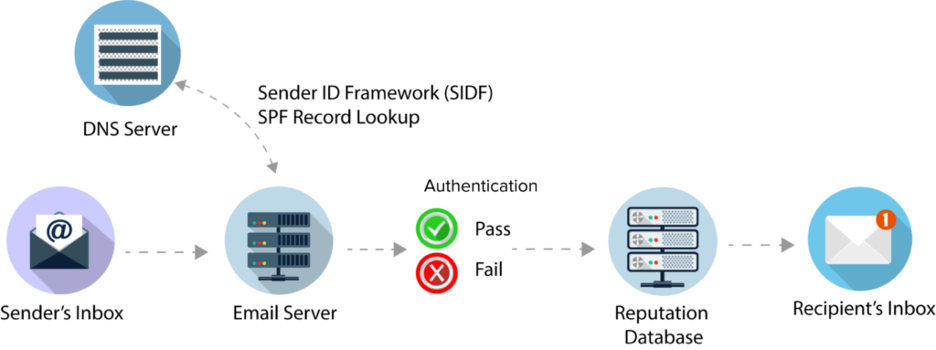In today’s digital landscape, email remains a critical communication tool for organizations. However, it is also a primary target for cyberattacks, including phishing, spam, and email spoofing. Leveraging the advanced security features by using an affordable SaaS offering can significantly enhance your organization’s email security and fulfilling your compliance requirements for your regulatory needs and customers. In this article, we will explore how Office365’s antispam, anti-phishing, SPF, and DMARC features can protect your email use and why partnering with Paradigm Security can optimize your security posture.
Why Email Security is Crucial
Email security is essential to protect sensitive information, maintain business continuity, and uphold your organization’s reputation.
Email is the easiest way to share information and documents within your organization and with your partners externally. Cybercriminals often exploit email vulnerabilities to steal your confidential information or change the content of the emails to commit fraud, making robust email security measures indispensable.
Office365 Antispam Features
Office365 provides powerful antispam features that help filter out unwanted and malicious emails before they reach your inbox. Here’s how it works:
Advanced Filters: Office365 uses sophisticated algorithms to detect and block spam emails.
Real-Time Threat Data leveraging Microsoft’s vast data network, Office365 updates its spam filters in real-time to counter emerging threats.
User Control: Administrators can customize spam filtering rules to suit their organization’s specific needs.
By using these features, organizations can drastically reduce the amount of spam, minimizing distractions and potential security risks.
Office365 Anti-phishing Features
Phishing attacks are designed to trick recipients into revealing sensitive information. Office365’s anti-phishing features offer robust protection:
AI-Powered Detection: Machine learning algorithms identify and block phishing attempts.
Impersonation Protection: Detects and mitigates attempts by attackers to impersonate trusted contacts.
Safe Links: Rewrites URLs in emails to direct users through Office365’s safe browsing service, which checks for malicious links in real-time.
These features help prevent phishing attacks, safeguarding your organization’s sensitive data.
What is SPF and how you can benefit from it?
SPF (Sender Policy Framework) is a protocol that specifies which mail servers are permitted to send emails on behalf of your domain. SPF helps to prevent email spoofing, ensuring that only authorized servers can send emails from your domain.
With SPF properly configured, cybercriminals cannot pass themselves for your organization to trick your peers and customers.

Here’s how to implement SPF in Office365:
- Configure DNS Records: Add an SPF record to your domain’s DNS settings specifying Office365’s mail servers.
- Validate and Monitor: Use Office365 tools to validate your SPF setup and monitor email traffic for compliance.
Utilizing DKIM
DKIM (DomainKeys Identified Mail) adds a digital signature to your emails to verify that the email content has not been altered in transit. Here’s how to set up DKIM in Office365:
Generate DKIM Keys: Office365 generates DKIM keys for your domain.
Update DNS Records: Publish the DKIM public key to your domain’s DNS records.
Enable DKIM: Activate DKIM signing in the Office365 admin center.
Utilizing DMARC
DMARC (Domain-based Message Authentication, Reporting & Conformance) builds on SPF and DKIM (DomainKeys Identified Mail) to provide comprehensive email protection.
It basically helps you automatically act against emails with failed SPF and DKIM checks and provides monitoring capabilities.
Here’s how to set up DMARC in Office365:
- Publish a DMARC Record: Create a DMARC record in your DNS to instruct email receivers on how to handle emails that fail SPF or DKIM checks.
- Policy Enforcement: Start with a monitoring policy (p=none) and gradually move to a stricter policy (p=quarantine or p=reject) as you gain confidence.
- Analyze Reports: Use the DMARC reports provided by Office365 to understand email traffic and identify potential issues.
DMARC not only helps in authenticating legitimate emails but also provides valuable insights through its reporting feature.
Why Choose Paradigm Security for Your Email Security Needs
By leveraging Office365’s antispam, anti-phishing, SPF, and DMARC features, organizations can significantly enhance their email security. However, to maximize these benefits, expert implementation and management are crucial as these email security features can be complex. Paradigm Security offers the expertise and support needed to protect your email communications effectively.
These are the points where Paradigm Security’s consultancy services can make a difference:
– Expertise: Our team of cybersecurity experts ensures optimal configuration and management of Office365 security features.
– Customized Solutions: We tailor our services to meet your specific needs, ensuring comprehensive protection.
– Continuous Support: We provide ongoing support and monitoring to adapt to evolving threats.
Contact us today to learn more about our services and how we can help secure your organization’s email infrastructure.
